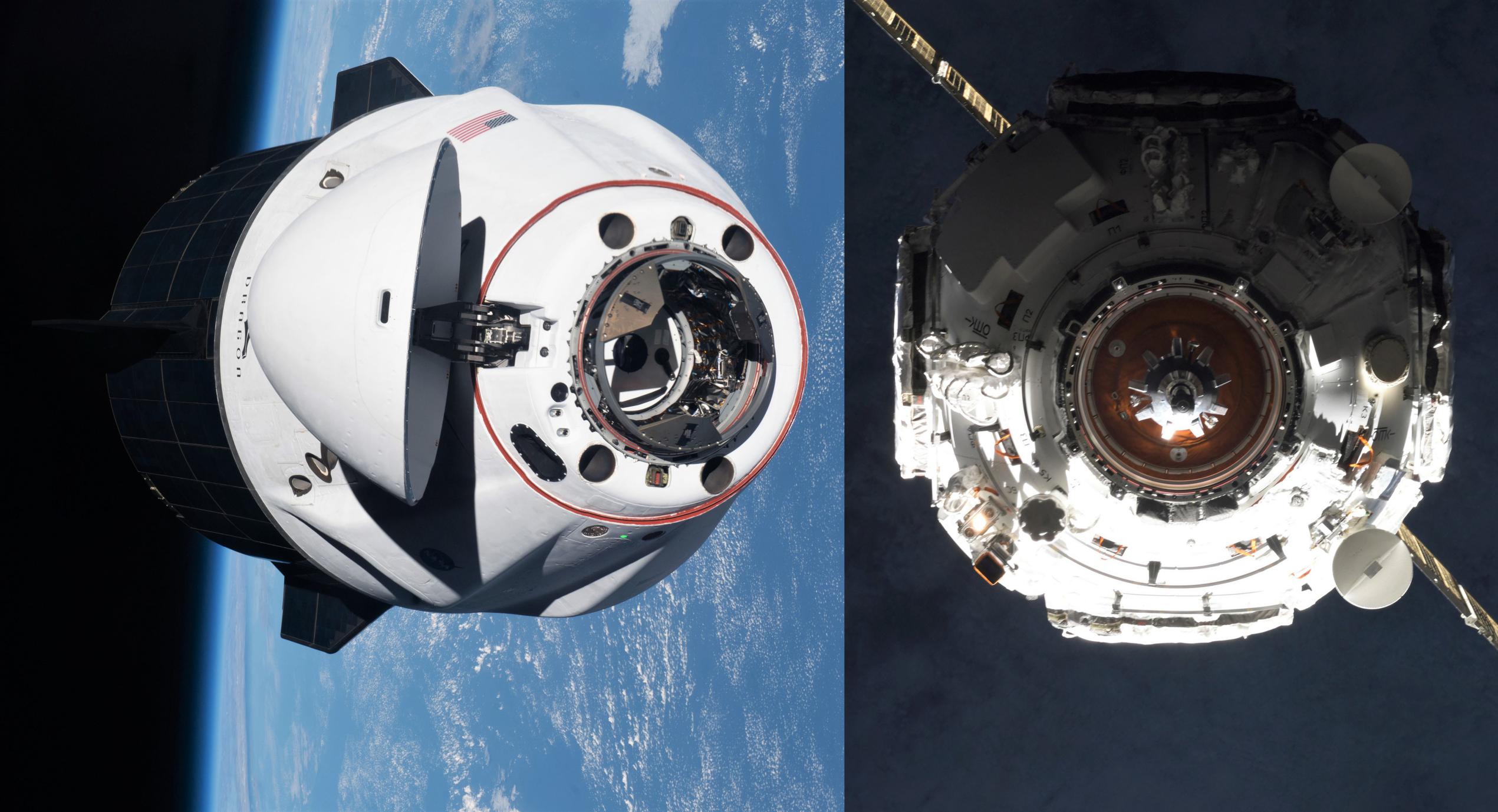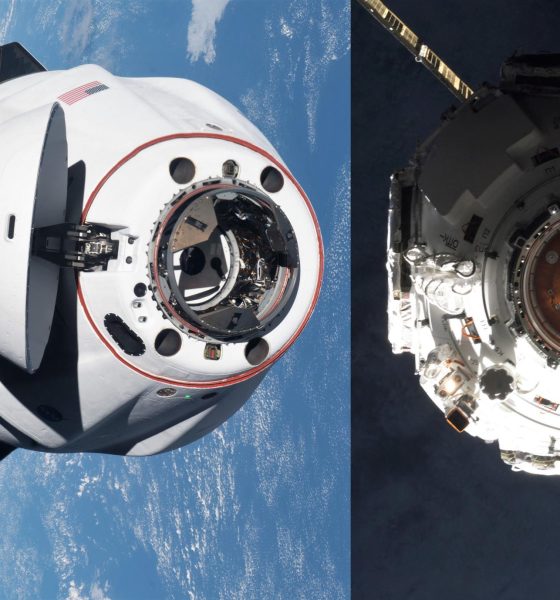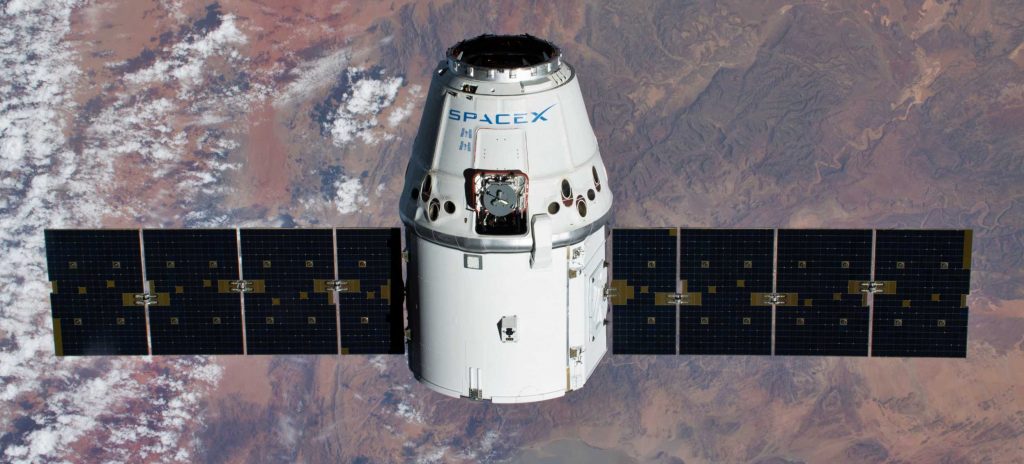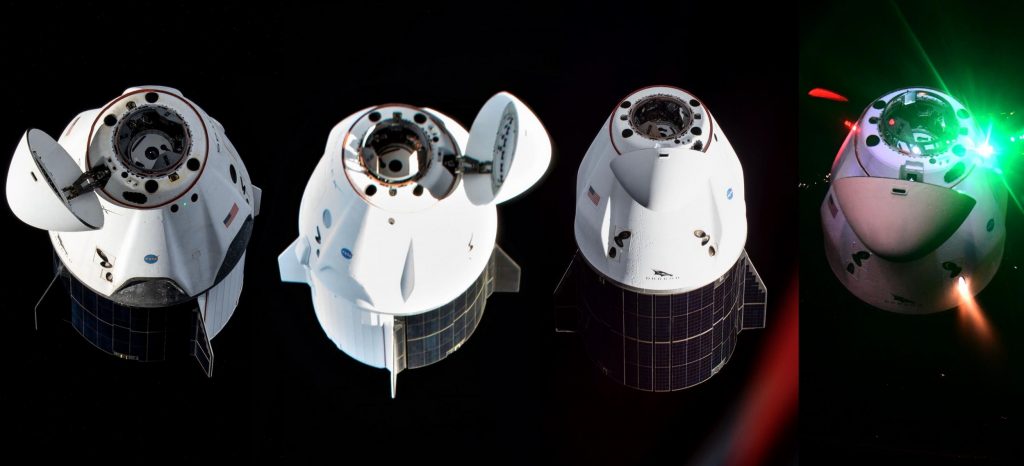

News
NASA wants SpaceX to dock Dragons at new Russian space station ‘node’
State media agency RIA says that NASA and Roscosmos are negotiating an agreement that would eventually allow SpaceX Dragon spacecraft and other future visiting vehicles to dock to a new Russian ‘node’ module recently installed on the International Space Station (ISS).
Prichal – Russian for “pier” – was successfully launched into orbit on a Soyuz 2.1 rocket on November 24th. A tug derived from the space agency’s uncrewed Progress resupply ship delivered the decade-old module to the ISS two days later, culminating in a successful docking on November 26th. Weighing almost four tons (3890kg/8600lb), Prichal is a 3.3m (~11ft) wide spherical pressure vessel whose sole purpose is to receive visiting cargo and crew vehicles and (in theory) enable further expansion of the space station’s Russian segment.
It remains to be seen if Roscosmos will be able to complete and launch any of several new planned space station modules in time for doing so to still make sense. Aside from a significant amount of uncertainty as to whether Russia will actually continue to support its ISS segment beyond 2030, Roscosmos has had a nightmarish time preparing the last two “new” segments – Prichal and Nauka. Nauka, a habitation and laboratory module, was originally planned to launch in 2007. Only fourteen years later – in July 2021 – did Roscosmos finally manage to finish and launch the module, which then proceeded to perform a long, uncommanded thruster firing that could have easily damaged or destroyed the entire station on the same day it arrived.
Meanwhile, work on Prichal began in 2007 and the module was initially expected to launch in 2013. Concerted development began in 2010 and construction was completed by 2014. Planned to be an extension of Nauka, Prichal was subsequently forced to spend almost seven years in storage before it was finally brought out of the closet and launched in November 2021.
Now, while odds are firmly against Prichal ever supporting another Russian ISS module, the ‘node’ still has plenty of potential operating solely as a docking hub or (per its namesake) a pier. Outfitted with six docking ports, one of which now connects it to Nauka and the rest of the ISS, the other five ports are effectively free to be used by any arriving Russian spacecraft – including Progress cargo ships, Soyuz crew vehicles, and next-generation Orel (Eagle) spacecraft. However, according to Roscosmos and state media outlet RIA, SpaceX’s Crew and Cargo Dragons and other US spacecraft set to use the western International Docking Adapter (IDA) standard could be added to the list of possible tenants.
To allow a spacecraft fitted with IDA to dock to one of Prichal’s four radial “ASP-GB” ports, some kind of adapter would first need to be designed, constructed, launched, and installed. The specifics of that work are likely what’s being “negotiated” – namely how Roscosmos will be compensated for building its portion of that hypothetical adapter. NASA would likely procure and provide a new IDA port, while Russia would build the ASP-GB connection. As is common for the ISS program, compensation would likely come in the form of services rendered rather than a direct payment, with NASA perhaps launching an extra Russian cosmonaut or providing a larger portion of supplies for a set period.


If realized, the addition of a third IDA port at the International Space Station would make life significantly easier for NASA. Even now, with just two spacecraft (Crew and Cargo Dragon) to worry about, NASA is forced to very carefully schedule arrivals and departures and has already had to have SpaceX perform multiple Crew Dragon port relocation maneuvers to prepare for the arrival of other Dragons. In the near future, Boeing’s Starliner spacecraft and semi-annual private Crew Dragon missions to the ISS will also enter the fray, making the scheduling and sequencing of spacecraft arrivals and departures even more challenging.
The US ISS segment really only has two ports still available for conversion to the IDA standard and both are needed to ensure safe, redundant cargo deliveries from uncrewed Cygnus and (as early as next year) Dreamchaser spacecraft throughout the 2020s. Ultimately, that means that an agreement to place a third IDA on the Russian segment is the only clear way NASA can give itself breathing room for the next decade of IDA spacecraft operations.

News
Tesla FSD v14.2.2 is getting rave reviews from drivers
So far, early testers have reported buttery-smooth drives with confident performance, even at night or on twisty roads.

Tesla Full Self-Driving (Supervised) v14.2.2 is receiving positive reviews from owners, with several drivers praising the build’s lack of hesitation during lane changes and its smoother decision-making, among others.
The update, which started rolling out on Monday, also adds features like dynamic arrival pin adjustment. So far, early testers have reported buttery-smooth drives with confident performance, even at night or on twisty roads.
Owners highlight major improvements
Longtime Tesla owner and FSD user @BLKMDL3 shared a detailed 10-hour impression of FSD v14.2.2, noting that the system exhibited “zero lane change hesitation” and “extremely refined” lane choices. He praised Mad Max mode’s performance, stellar parking in locations including ticket dispensers, and impressive canyon runs even in dark conditions.
Fellow FSD user Dan Burkland reported an hour of FSD v14.2.2’s nighttime driving with “zero hesitations” and “buttery smooth” confidence reminiscent of Robotaxi rides in areas such as Austin, Texas. Veteran FSD user Whole Mars Catalog also demonstrated voice navigation via Grok, while Tesla owner Devin Olsen completed a nearly two-hour drive with FSD v14.2.2 in heavy traffic and rain with strong performance.
Closer to unsupervised
FSD has been receiving rave reviews, even from Tesla’s competitors. Xpeng CEO He Xiaopeng, for one, offered fresh praise for FSD v14.2 after visiting Silicon Valley. Following extended test drives of Tesla vehicles running the latest FSD software, He stated that the system has made major strides, reinforcing his view that Tesla’s approach to autonomy is indeed the proper path towards autonomy.
According to He, Tesla’s FSD has evolved from a smooth Level 2 advanced driver assistance system into what he described as a “near-Level 4” experience in terms of capabilities. While acknowledging that areas of improvement are still present, the Xpeng CEO stated that FSD’s current iteration significantly surpasses last year’s capabilities. He also reiterated his belief that Tesla’s strategy of using the same autonomous software and hardware architecture across private vehicles and robotaxis is the right long-term approach, as it would allow users to bypass intermediate autonomy stages and move closer to Level 4 functionality.
News
Elon Musk’s Grok AI to be used in U.S. War Department’s bespoke AI platform
The partnership aims to provide advanced capabilities to 3 million military and civilian personnel.

The U.S. Department of War announced Monday an agreement with Elon Musk’s xAI to embed the company’s frontier artificial intelligence systems, powered by the Grok family of models, into the department’s bespoke AI platform GenAI.mil.
The partnership aims to provide advanced capabilities to 3 million military and civilian personnel, with initial deployment targeted for early 2026 at Impact Level 5 (IL5) for secure handling of Controlled Unclassified Information.
xAI Integration
As noted by the War Department’s press release, GenAI.mil, its bespoke AI platform, will gain xAI for the Government’s suite of tools, which enable real-time global insights from the X platform for “decisive information advantage.” The rollout builds on xAI’s July launch of products for U.S. government customers, including federal, state, local, and national security use cases.
“Targeted for initial deployment in early 2026, this integration will allow all military and civilian personnel to use xAI’s capabilities at Impact Level 5 (IL5), enabling the secure handling of Controlled Unclassified Information (CUI) in daily workflows. Users will also gain access to real‑time global insights from the X platform, providing War Department personnel with a decisive information advantage,” the Department of War wrote in a press release.
Strategic advantages
The deal marks another step in the Department of War’s efforts to use cutting-edge AI in its operations. xAI, for its part, highlighted that its tools can support administrative tasks at the federal, state and local levels, as well as “critical mission use cases” at the front line of military operations.
“The War Department will continue scaling an AI ecosystem built for speed, security, and decision superiority. Newly IL5-certified capabilities will empower every aspect of the Department’s workforce, turning AI into a daily operational asset. This announcement marks another milestone in America’s AI revolution, and the War Department is driving that momentum forward,” the War Department noted.
News
Tesla FSD (Supervised) v14.2.2 starts rolling out
The update focuses on smoother real-world performance, better obstacle awareness, and precise end-of-trip routing, among other improvements.

Tesla has started rolling out Full Self-Driving (Supervised) v14.2.2, bringing further refinements to its most advanced driver-assist system. The new FSD update focuses on smoother real-world performance, better obstacle awareness, and precise end-of-trip routing, among other improvements.
Key FSD v14.2.2 improvements
As noted by Not a Tesla App, FSD v14.2.2 upgrades the vision encoder neural network with higher resolution features, enhancing detection of emergency vehicles, road obstacles, and human gestures. New Arrival Options let users select preferred drop-off styles, such as Parking Lot, Street, Driveway, Parking Garage, or Curbside, with the navigation pin automatically adjusting to the user’s ideal spot for precision.
Other additions include pulling over for emergency vehicles, real-time vision-based detours for blocked roads, improved gate and debris handling, and extreme Speed Profiles for customized driving styles. Reliability gains cover fault recovery, residue alerts on the windshield, and automatic narrow-field camera washing for new 2026 Model Y units.
FSD v14.2.2 also boosts unprotected turns, lane changes, cut-ins, and school bus scenarios, among other things. Tesla also noted that users’ FSD statistics will be saved under Controls > Autopilot, which should help drivers easily view how much they are using FSD in their daily drives.
Key FSD v14.2.2 release notes
Full Self-Driving (Supervised) v14.2.2 includes:
- Upgraded the neural network vision encoder, leveraging higher resolution features to further improve scenarios like handling emergency vehicles, obstacles on the road, and human gestures.
- Added Arrival Options for you to select where FSD should park: in a Parking Lot, on the Street, in a Driveway, in a Parking Garage, or at the Curbside.
- Added handling to pull over or yield for emergency vehicles (e.g. police cars, fire trucks, ambulances).
- Added navigation and routing into the vision-based neural network for real-time handling of blocked roads and detours.
- Added additional Speed Profile to further customize driving style preference.
- Improved handling for static and dynamic gates.
- Improved offsetting for road debris (e.g. tires, tree branches, boxes).
- Improve handling of several scenarios, including unprotected turns, lane changes, vehicle cut-ins, and school buses.
- Improved FSD’s ability to manage system faults and recover smoothly from degraded operation for enhanced reliability.
- Added alerting for residue build-up on interior windshield that may impact front camera visibility. If affected, visit Service for cleaning!
- Added automatic narrow field washing to provide rapid and efficient front camera self-cleaning, and optimize aerodynamics wash at higher vehicle speed.
- Camera visibility can lead to increased attention monitoring sensitivity.
Upcoming Improvements:
- Overall smoothness and sentience.
- Parking spot selection and parking quality.








